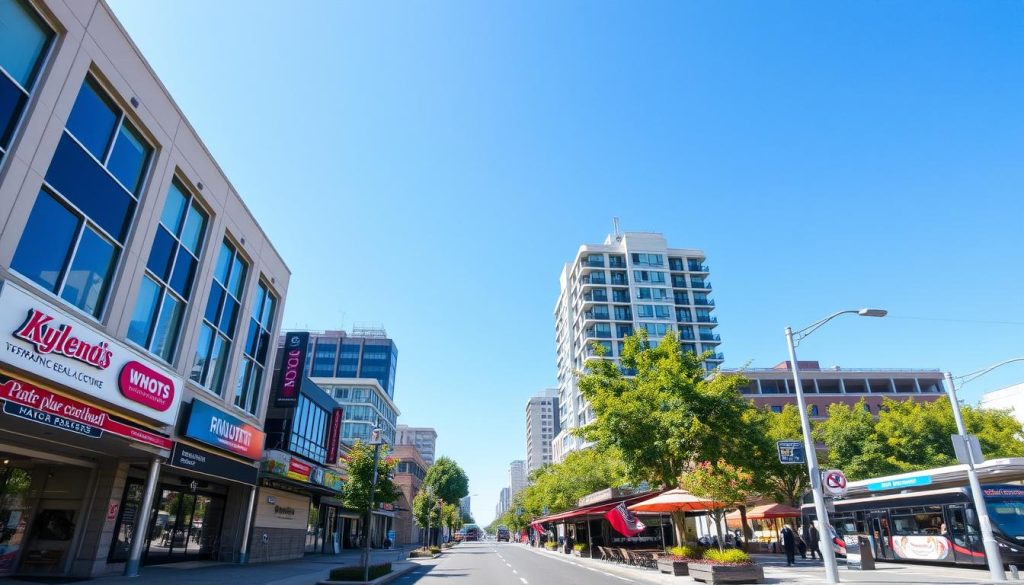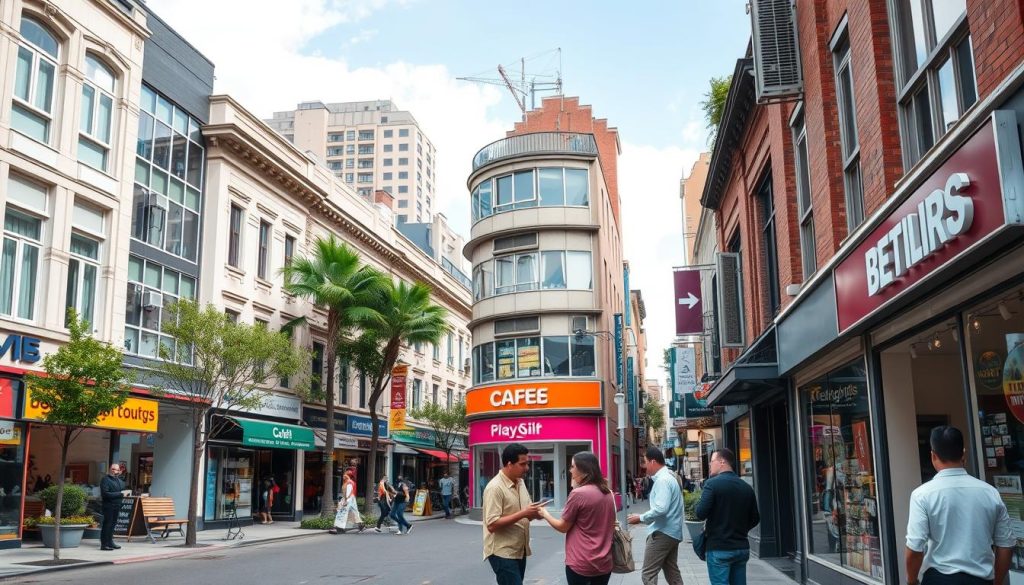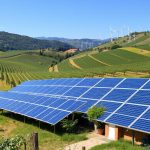Finding the right spot is key to making a business thrive or a home a happy place. This guide offers insights into picking the best site for different needs. It looks at personal and economic factors. By learning key tips for choosing a business location, readers will know how to pick the right spot. This knowledge can boost growth and happiness in your chosen place.
Key Takeaways
- Understanding the impact of location on success.
- Evaluating both personal and economic factors.
- Utilising practical strategies for informed decision-making.
- Recognising the significance of community and amenities.
- Staying updated on market trends related to location.
Understanding the Importance of Site Selection
Choosing the right site is key for both businesses and individuals. A good location boosts a company’s visibility and makes it easier for people to find. For businesses, picking a location means looking at things like how close it is to competitors, who lives nearby, and what services are available. These factors help decide if a business will do well now and in the future.
For those buying homes, the site’s quality matters a lot too. Things like how safe the area is, what services are nearby, and how close to schools it is affect property values and lifestyle. It’s important to keep up with market trends and study real estate data to make smart choices about where to live.
In short, understanding the value of site selection leads to better planning, whether starting a business or buying a home. The right location affects many parts of life and work. So, it’s crucial for anyone making real estate decisions.
Factors to Consider When Choosing a Location
Choosing a spot for a business or home needs careful thought. It’s vital to know the local people to match products with their needs. Demographics include age, income, and social trends, affecting marketing and sales. Easy access is crucial; it boosts customer visits and worker happiness. Checking transport links shows how easy it is to get to the place, helping business do better.
Demographics and Target Audience
Businesses must think about who they want to reach when picking a location. Knowing the age, income, and likes of the people there helps tailor products. For example, young people might like trendy spots, while older folks might want health services. This insight helps make offerings that hit the mark.
Accessibility and Transportation Links
Good transport links are key in picking a location. They make it easy for people to get there, bringing in more customers and helping the business. Places with bad transport links often lose out on customers and happy workers. Checking transport links is part of choosing the right spot to make sure a business does well.
| Demographic Factor | Importance | Impact on Business |
|---|---|---|
| Age Distribution | Identifies target market | Tailored products/services |
| Income Levels | Determines pricing strategy | Sales projections |
| Social Trends | Guides marketing approach | Brand positioning |
| Public Transport Accessibility | Enhances customer reach | Increased sales |
| Major Road Links | Facilitates logistics | Cost efficiency |
Choosing the Right Location for Your Business

Finding the perfect spot for your business is key to its success. The right location draws in customers and boosts efficiency. Two main things to think about are being close to competitors and managing costs.
Proximity to Competitors
Knowing how close you are to competitors is crucial. Being near rivals can give you an edge, bringing in more customers. In retail, being close to other shops makes you more visible to shoppers.
But, too many competitors can spread out your customer base too thin, hurting profits. Looking at the competition helps you pick a location that works for your business.
Cost Implications and Budgeting
Costs greatly affect where you choose to set up shop. You need to consider rent, utilities, taxes, and insurance. Figuring out these costs helps you pick a location that fits your budget.
Here’s a look at typical costs for different places:
| Location Type | Average Rent per Month | Estimated Property Taxes per Year | Typical Utility Costs per Month |
|---|---|---|---|
| High Street Retail | £3,000 | £5,000 | £400 |
| Suburban Office | £1,500 | £3,000 | £200 |
| Industrial Warehouse | £2,000 | £4,000 | £350 |
Residential Site Selection Tips
Choosing the right place to live is key to a good life. This part looks at why local amenities and safety are important. These are key things to think about when picking where to live.
Local Amenities and Services
Having local shops and services nearby is vital. A good spot should be close to:
- Schools and educational institutions
- Shopping centres and grocery stores
- Parks and recreational areas
- Healthcare facilities and hospitals
A place with lots of local amenities makes life easier and more enjoyable. Being close to what you need daily can make you happier. It’s a big plus when choosing a place to live.
Safety and Crime Rates
Feeling safe is crucial when picking a home. Looking at crime rates helps you understand how safe an area is. You should check:
- The overall crime rate
- Types of crimes reported
- Trends in crime over recent years
Police data and community feedback are great sources for safety info. Knowing about safety helps you make smart choices. It gives you peace of mind.
| Local Amenities | Safety Considerations |
|---|---|
| Access to schools | Low crime rate |
| Proximity to parks | Community safety initiatives |
| Nearby healthcare services | Presence of neighbourhood watch programmes |
| Shopping facilities | Positive resident reviews on safety |
Legal Considerations in Site Selection
Understanding the legal side of picking a site is key for any project. Knowing about zoning laws, land use rules, and property regulations helps avoid problems with local authorities. It makes the project move forward smoothly.
Zoning laws tell us how we can use land in different areas. They affect what kind of buildings we can have, how close they can be together, and their purpose. It’s important to check that the site use fits these laws to avoid big problems or legal fights.
Property regulations cover more than just land use. They include rules on building size, height, and permits needed. Knowing these rules helps get the right approvals for building and lowers the risk of future issues.
It’s a good idea to talk to legal experts or local authorities for help with site selection laws. Websites of municipalities and planning departments often have important info. This includes zoning maps and property details that are key to making good choices.
Looking into these legal points helps people and businesses pick the right site. This ensures their project meets all the rules, leading to success.
Environmental Factors to Assess

Choosing the right site means looking at many environmental factors. These factors can greatly affect a project’s success and the quality of life there. Things like climate, natural disaster risks, and efforts to be sustainable are key. Also, having green spaces is now seen as crucial for health and happiness.
Climate and Natural Disasters
Climate is key to understanding the lifestyle and business challenges in a place. Areas with lots of rain or floods can be tough for buildings and supply chains. Knowing the climate helps businesses plan for these issues.
It’s also important to think about natural disasters like earthquakes or hurricanes. By looking at past events and risks, site selectors can make smart choices to reduce risks.
Sustainability and Green Spaces
Thinking about sustainability is crucial for a site’s long-term success. Places that focus on being green draw in people and businesses that care about the planet. Green spaces make areas look better, increase property values, and help communities come together.
Building that are energy-efficient and have good transport links are also a plus. They make a site more appealing and satisfying for everyone.
| Factor | Importance | Considerations |
|---|---|---|
| Climate | Influences lifestyle and business viability | Identify potential climate-related risks |
| Natural Disasters | Affects property and infrastructure resilience | Evaluate historical disaster data |
| Sustainability | Supports long-term ecological health | Integrate energy-efficient practices |
| Green Spaces | Enhances community well-being | Assess accessibility to parks and nature |
Utilising Technology for Site Selection
In today’s fast-paced world, technology plays a big part in picking the right site for a business. It uses data analysis to spot market trends. GIS helps by showing data like demographics and transport links, which are key for making smart choices.
Data Analysis Tools
Using data analysis tools gives a deeper look into a location’s pros and cons. Platforms like SQL databases, Excel, and Tableau can dig into demographics, economy, and how people behave. This helps businesses make decisions based on solid data.
Mapping and GIS Technologies
GIS mapping is crucial for picking the best site. It shows important geographic data in a clear way. Tools like ArcGIS let you see things like land use, population, and how easy it is to get to a place. This helps businesses plan better and find the best spots for growth.
| Technology Type | Purpose | Examples |
|---|---|---|
| Data Analysis Tools | Analyse trends and consumer behaviour | SQL, Excel, Tableau |
| GIS Mapping Tools | Visualise and assess geographic data | ArcGIS, QGIS |
| Reliability Analysis | Evaluate site performance | Statistical Software, SPSS |
Market Trends Influencing Location Choice
Market trends are key in shaping where businesses and people choose to be. With new tech and changing priorities, how we live and work is evolving. More people now work from home, making suburbs and rural areas more appealing.
Urban areas, once the heart of business, are seeing a shift in demand. There’s a big rise in people looking for homes outside city limits. They want places with lots of greenery and local shops, especially after the pandemic.
Businesses need to keep up with these changes when picking where to set up shop.
To understand how location choices are changing, let’s look at key market trends:
- Increased interest in eco-friendly neighbourhoods.
- Demand for flexible workspaces that cater to a hybrid work model.
- Optimisation of logistics for supply chain efficiencies.
- Enhanced focus on health and safety measures in public spaces.
Staying on top of these shifts in what people want can help marketers and business owners. It leads to smarter decisions on where to invest and set up shop.
| Trend | Impact on Location Choice |
|---|---|
| Remote Work Increase | Higher demand for suburban properties |
| Rise of E-commerce | Need for strategically located warehouses |
| Health Awareness | Preference for areas with parks and recreational facilities |
| Green Living | Growing interest in eco-friendly communities |
Assessing Local Competition

Knowing who you’re up against is key when picking a spot for your business. A deep dive into the competition shows if an area is too crowded or still open for new players. It helps see if there are any gaps in the market that you could fill.
Market Saturation Levels
Figuring out how saturated the market is means looking at what others are doing. You’ll want to know about their market share and what kind of customers they have. Here are some steps to follow:
- Conduct surveys to understand consumer preferences in the area.
- Utilise online tools and databases for demographic analysis.
- Perform field visits to evaluate competitor locations and offerings.
Not all markets are the same. Some areas are super competitive, while others have hardly any options. Spotting these differences helps you see if it’s a good time to jump into a new market. Using data can also make your analysis more precise, leading to better decisions.
| Competitor | Market Share (%) | Number of Locations | Year Established |
|---|---|---|---|
| Competitor A | 25 | 10 | 2015 |
| Competitor B | 40 | 5 | 2010 |
| Competitor C | 15 | 3 | 2020 |
| Competitor D | 20 | 8 | 2018 |
Looking closely at your competitors tells you a lot about the market and where you could stand out. It helps you see where you can grow or be different. Knowing the competition lets you plan your move carefully and take smart risks.
Making the Final Decision on Location
Choosing the right location is a big decision. It’s important to look at all the factors that matter. Experts can give great advice to help you decide. Talking to real estate agents or urban planners can also reveal things you might not know.
When making your final choice, make a list of the good and bad points of each place. Think about things like money, growth potential, how easy it is to get to, and if it fits with your goals. This way, you can see clearly what each place offers and what it lacks.
Using a table can help you compare the key features of each location:
| Criteria | Location A | Location B | Location C |
|---|---|---|---|
| Cost | £200,000 | £250,000 | £180,000 |
| Accessibility | Good | Excellent | Fair |
| Growth Potential | High | Medium | High |
| Proximity to Competitors | Close | Very Close | Remote |
After looking at all the facts, pick the location that best fits your goals. A careful review will help you choose a place that’s promising and right for you.
Future Growth and Expansion Potentials
When picking a site, think about its growth and expansion potential. This is key for long-term success and staying strong. Look at the area’s future plans from local authorities and growth initiatives. This helps in choosing the right site and finding chances for growth.
Future Development Plans in the Area
It’s important to check out the area’s growth potential. Look at what’s happening now and what’s planned. Local governments share zoning laws and infrastructure projects, which can change an area’s future. Consider these points:
- Proposed transport links that may improve accessibility.
- New commercial developments which can increase foot traffic.
- Planned residential projects that could impact the local workforce size.
- Infrastructure upgrades, such as utilities and broadband access.
- Environmental initiatives that may influence land use and sustainability.
Looking into these plans gives insights into the site’s future. Talking to local business groups and town planning meetings can also help. This way, you make a smart choice, helping your business grow and expand over time.
Budgeting for Site Selection
Starting to pick a site for your business means setting a budget first. It’s crucial for making smart choices. You need to make sure the site fits your budget and meets your goals. Begin by figuring out the costs like the purchase price, legal fees, and any needed changes to the site.
Don’t forget about ongoing costs like rent, utilities, upkeep, and taxes. These can change your budget a lot over time. Knowing these costs helps you plan for the money needed for a new location.
Look into financial help and grants that can make picking a site easier. Local councils and governments often give money to businesses moving to certain areas. Adding these to your budget can save you a lot of money, making your business more financially stable.
















